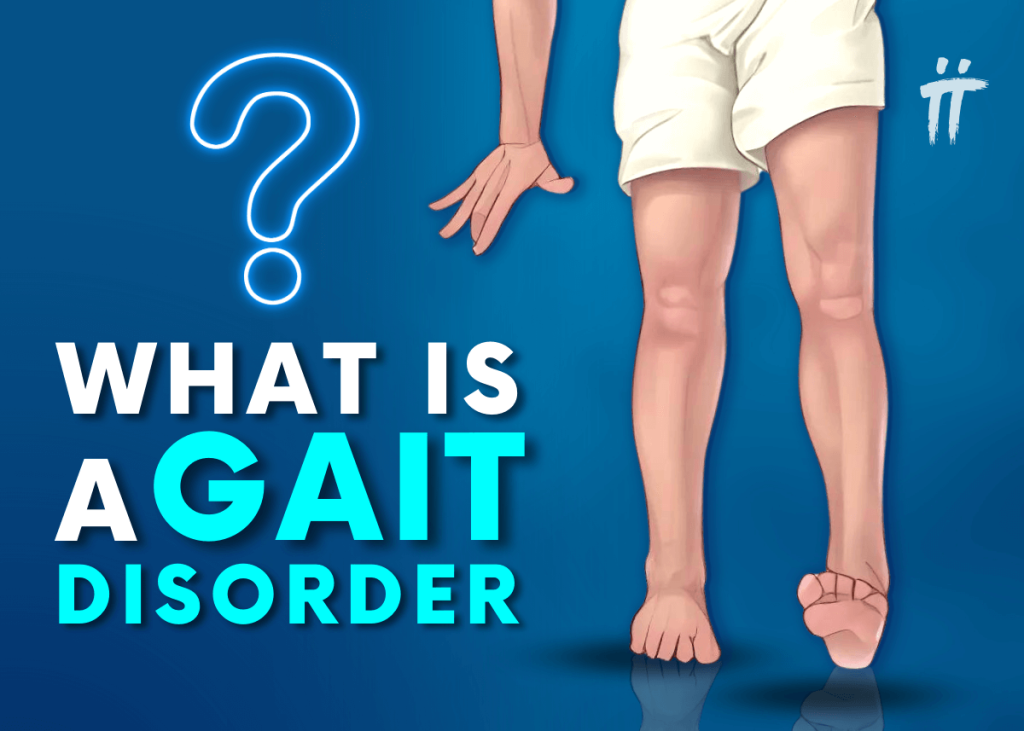
Walking is a common activity of our daily lives and involves a systematic cycle. This cycle consists of a complex series of movements that require our brain, bones and muscles to work together. If there is a problem in any of these systems, people may experience walking disorders.
Causes of gait disorders include neurological (related to the nervous system) conditions, orthopedic problems (related to bones, muscles and joints) and other diseases (respiratory failure, arterial blockage, obesity, etc.). In addition, impaired gait and balance can be a harbinger of falls, which are the most common cause of fractures, especially in the elderly.
If you have symptoms such as unsteadiness, slow walking speed and difficulty walking while walking or standing; What is a gait disorder? Why does it happen? What are the symptoms of gait disorders? What are the types? How is it diagnosed and how is gait disturbance corrected? You can find the answers to your questions in the rest of our article.
Table of Contents:
- What is Gait Disorder?
- How Should I Walk Correctly?
- What Causes Gait Disorder?
- Can mineral and vitamin deficiencies cause gait disturbance?
- What are the Symptoms of Gait Disorders?
- What are the Types of Gait Disorders?
- How is Gait Disorder Diagnosed?
- How is Gait Disorder Corrected?
What is Gait Disorder?
Gait is the term used to describe the way a person walks. The two basic functions of gait are balance and movement. Balance refers to the body posture necessary to keep the body upright and in the proper position for movement or to protect against falls.
Movement consists of rhythmic, regular movements of the limbs (arms, legs) and torso that move the person in the desired direction. In simpler terms, walking is an action that requires both balance and muscle coordination.
As seen in Picture 1, a problem in one or more of the stages that make up the normal gait cycle prevents a healthy gait. This is referred to as gait disturbance.
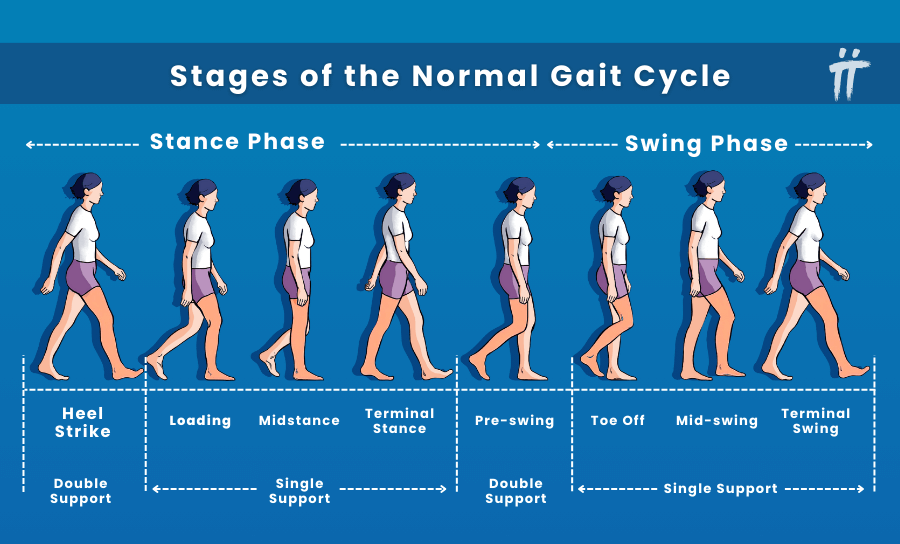
How Should I Walk Correctly?
Starting the walk requires a stable and upright body position. To start walking, lift one leg and flex the hip and knee forward. Then the heel of the swinging leg is placed on the ground (heel strike), which is necessary for a correct gait.
The body weight is gradually shifted to the soles and then to the toes. During the mid-stance, the other leg is lifted and moves forward. Meanwhile, the body is held upright and the arms are swung in the opposite direction to the leg on the same side (Picture 1). The normal gait cycle is 60% stance phase and 40% swing phase.
What Causes Gait Disorder?
Gait impairment can be broadly categorized into neurological (related to the nervous system) or non-neurological causes. Neurological causes include stroke (partial paralysis), neuropathy (nerve damage), movement disorders, disorders of the brain and cerebellum, and spinal cord disorders.
Non-neurological causes include; calcification of the feet, ankles, knees, hips or spine, bone deformities, leg length inequalities, narrowing of the spinal canal in the neck region, narrowing of the spinal canal in the lumbar region, visual impairments, respiratory failure, vascular occlusions and obesity.
Depending on the underlying cause, gait disturbance can be sudden (acute), prolonged (chronic) or episodic. Sudden gait disturbances always require urgent medical attention.
Permanent or chronic gait disorders are gait disorders that the patient has adapted to, usually due to neurological disorders. Gait disturbance in the form of attacks occurs intermittently and suddenly, causing unexpected falls.
In many diseases related to neurological disorders, gait disturbance can be seen as a result of both the peripheral nervous system and the central system being affected. For example, neurological diseases such as Parkinson’s, Huntington’s and hydrocephalus can affect central nervous system functions and cause gait disturbances.
In addition, people with neurological conditions such as cerebral palsy, hereditary nervous system disorder (CMT), muscle disease and spinal muscular atrophy (SMA) may also experience gait impairment due to weakened hip, thigh and leg muscles.
Especially quadriceps (anterior thigh muscle) muscle weakness affects walking very much and is one of the most important leg muscles causing gait disturbance (Picture 2).
Musculoskeletal gait disorders can be seen due to various causes such as lower side (hip, thigh and leg) muscle weakness, spinal canal stenosis, scoliosis (spinal curvature), braces, flatfoot, leg shortness, hip dislocation, calcification and bone curvature.
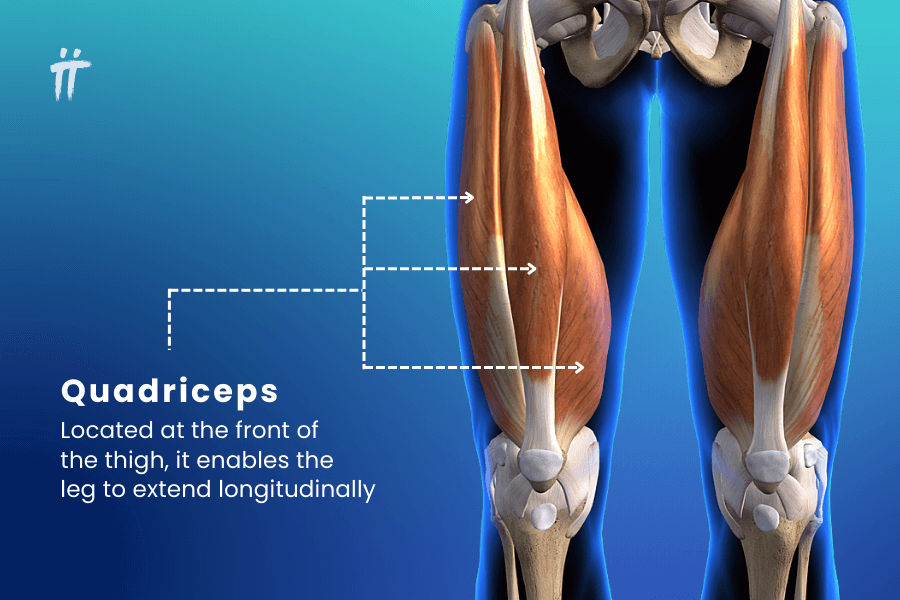
Can mineral and vitamin deficiencies cause gait disturbance?
Mineral (calcium, magnesium) and vitamin deficiencies (folic acid, vitamin B12, vitamin E), which have an important role in maintaining the functions of the musculoskeletal system, are also among the causes of gait disorders. For example, vitamin B12 deficiency, which causes deterioration in the spinal cord nerve structure, can lead to numbness and tingling, with loss of deep sensation affecting gait.
In addition, people with psychiatric-based illnesses such as anxiety and depression may also have difficulty with psychological walking. The patient’s gait disturbance should not be considered psychological without excluding all underlying causes.
As can be seen, many different diseases or conditions can cause gait disorders. The most common causes of gait disorder are as follows:
- Structural abnormalities in muscles, bones and joints,
- Structural diseases of the muscle, such as muscular dystrophy,
- Calcification of the joints and joint-tendon inflammation,
- Muscle, bone and joint injuries,
- Neurological diseases such as Cerebral Palsy, Multiple Sclerosis and Parkinson’s disease,
- Psychological difficulty walking due to anxiety and depression.
What are the Symptoms of Gait Disorders?
Symptoms of gait disorders vary depending on the underlying cause of the gait disorder. The most common symptoms of gait disorders are;
- Unsteadiness or swaying when walking or standing,
- Difficulty standing up from a sitting position,
- Slow walking speed and difficulty walking,
- Muscle tension or spasms,
- Weakness in the leg muscles or one side of the body.
What are the Types of Gait Disorders?
Types of gait disorders can be of different types depending on musculoskeletal (orthopedic), neuromuscular (neurological-nervous system), spine and brain damage. Some of the most common types of gait are:
What is the Antalgic Walk?
Antalgic gait, which is popularly referred to as limping, is a gait disorder characterized by shortening of the load duration of the affected side due to pain. Antalgic gait is often caused by musculoskeletal problems and can be the result of a traumatic injury such as arthritis, fracture or sprain. In this type of gait, people take slow and short steps, shifting their weight from the affected leg to the unaffected leg.
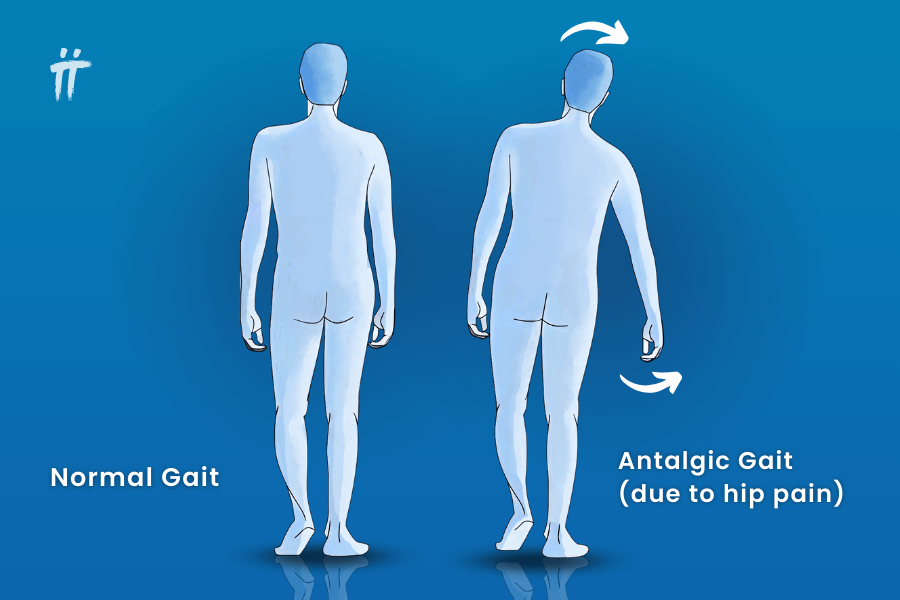
What is Coxalgic Gait?
Another gait disorder related to the musculoskeletal system is coxalgic gait caused by hip joint pain. In patients with hip pain, the upper trunk is typically shifted towards the affected side during stance on the affected leg (Picture 3). The most common cause of coxalgic gait is hip joint calcification due to hip dislocation.
What is Ataxic Gait?
Ataxic gait is caused by a lack of coordination of muscle movements. The main cause of impaired coordination of muscle movements is dysfunction in the brain and parts of the cerebellum that coordinate movement.
In the ataxic gait type, the person’s gait is irregular and jerky. In a normal person, walking is involuntary, that is, without thinking, with the coordination of the brain and musculoskeletal system. In ataxic gait, the coordination between the central nervous system and the musculoskeletal system is disrupted and an unstable, irregular gait disorder occurs.
What is Propulsive Walking?
Propulsive gait is seen in Parkinson’s patients and is characterized by hunched and rigid body posture. People with this gait type walk with the head and neck forward of the trunk. The steps are also shorter and faster.
What is Steppage Walk?
Steppage gait is seen as a result of the inability to lift the foot off the ground (drop foot) associated with nerve damage. The feet and toes of people with this gait type are pointing downwards; since the person cannot pull the foot and toes backwards, they drag their feet and toes on the ground (Picture 4). In this type of gait, the patient walks with the knee pulled back to compensate for the drop of the foot.

What is Shear Walk?
People with a scissors gait have their legs bent inwards while walking. When walking, the knee and thigh area can cross and hit each other. The legs, hips and pelvis flex, making the person look like they are squatting. The steps are slow and small. This type of gait is usually seen in patients with spastic cerebral palsy.
What is Spastic Gait?
Spastic gait, which is common in patients with cerebral palsy or multiple sclerosis, is a gait in which one or both legs are stiff and the leg affected by prolonged muscle contraction is dragged in a semicircular motion.
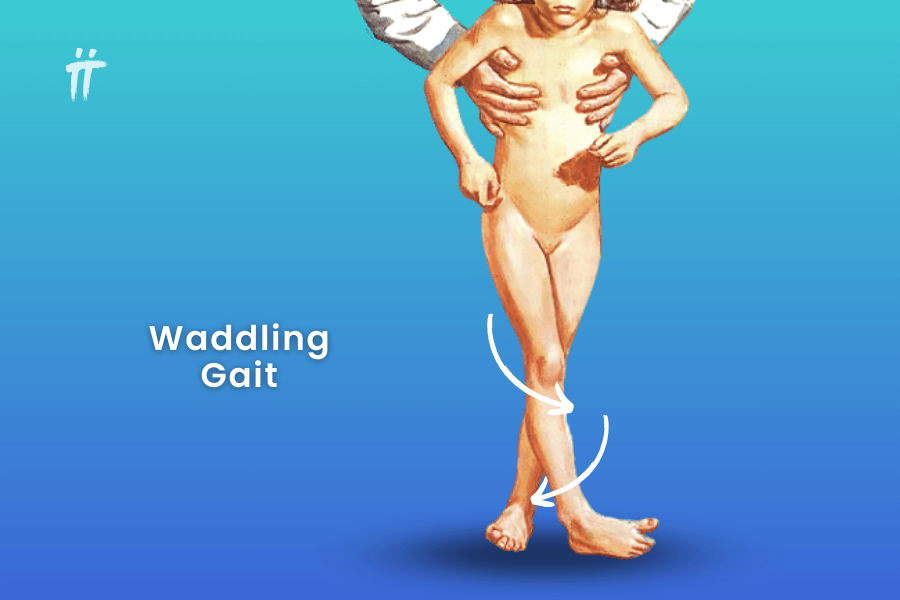
What is Waddling?
Waddling gait; It is the popularly known name of walking by tipping over on both sides due to muscle weakness or bone curvature. People move to the right and left during walking. Waddling gait disorder can be seen due to congenital hip dislocation and muscular dystrophies. This gait disorder can also be seen in bone curvatures such as braces.
What is Trendelenburg Gait (Duck-like Gait)?
Trendelenburg, or duck-like gait disorder as it is popularly known, can be seen due to weakness of the hip and upper thigh muscles. People often have difficulty standing up from a sitting position.
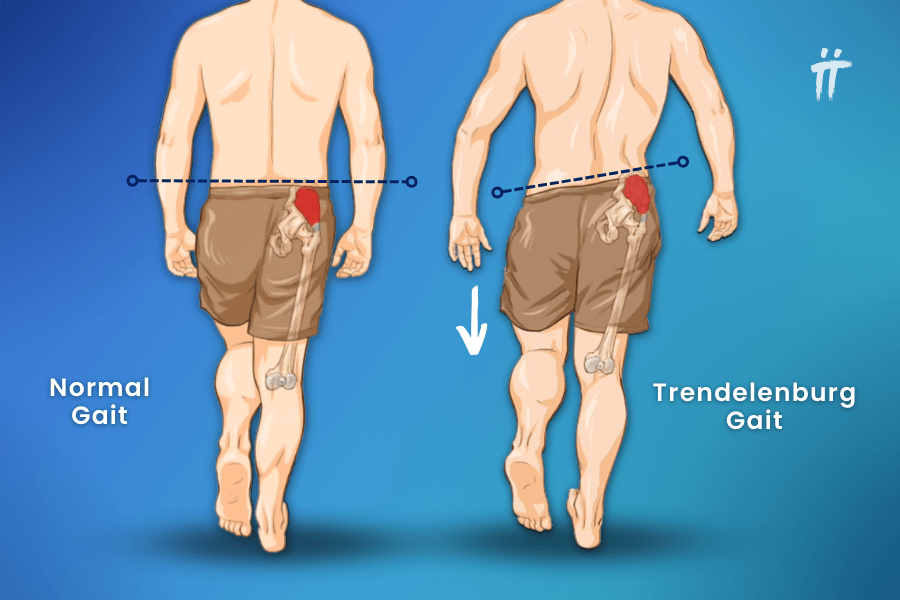
Due to weakness in the gluteus medius muscle, the hip next to the swinging leg drops with each step. The person shifts their weight to the unaffected side to reduce the load on the affected hip (Picture 5).
How is Gait Disorder Diagnosed?
To diagnose a gait disorder, a neurology or orthopedic doctor will first listen to the patient’s medical history and perform a physical examination. The physical examination includes a general assessment of the patient, a musculoskeletal examination and a neurological examination.
After the examination, various laboratory (blood) tests and imaging methods such as X-ray, tomography and MRI (Magnetic Resonance Imaging) are used to determine the structural cause of the gait disorder. However, the decision on which imaging method to use is based on the symptoms of gait disorders.

How is Gait Disorder Corrected?
In the treatment of gait disorders, it is important to accurately diagnose the underlying cause of gait and balance disorders in order to make an effective treatment plan. The treatment plan depends on the severity of the person’s symptoms of gait disturbance and where they originate.
In walking disorders caused by musculoskeletal and joint disorders, assistive devices such as canes and walkers can help in some cases where balance is a problem.
Balance and strengthening exercises applied in physical therapy are among the treatment options used to improve balance, strength and flexibility. However, surgical intervention may be required in cases of hip dislocation, advanced joint calcification and fractures.
Patients whose gait disturbance is caused by neurological and psychological causes can be treated with medication to relieve symptoms.
If you or your child has a balance disorder while walking, you can contact us for your questions about walking and balance disorder or make an appointment with our doctors to evaluate gait disorder treatment options.





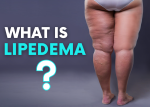

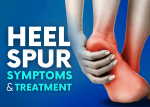
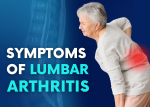
Leave a Comment